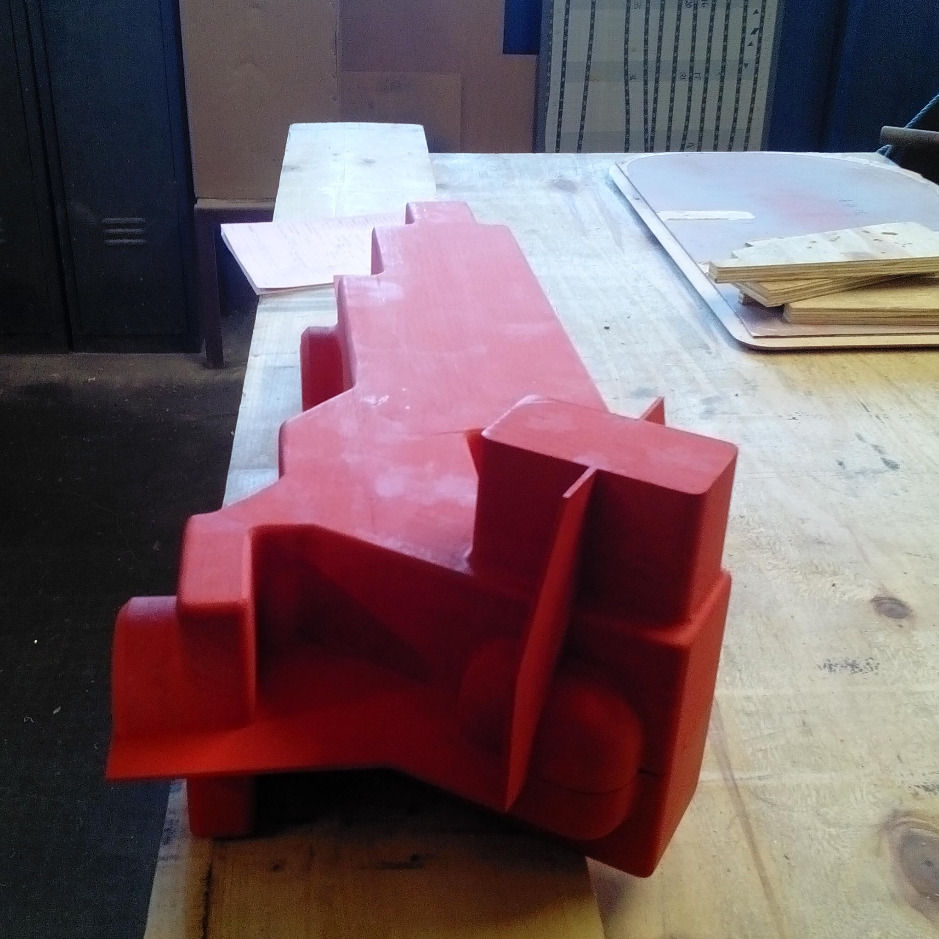Plastic Plastic - A field trip to PM - Plastic Mouldings Limited
- saskiagoeres

- 30. Jan. 2017
- 2 Min. Lesezeit
Our Product Design Engineering class visited the factories of PM – Plastic Mouldings Limited – in Irvine, Scotland. Since 1963 they produce lots of different products out of plastic.
The processes used to manufacture their products includes
dip moulding, neoprene, rotational, vacuum, slush and fabrication processes.
The overall process includes:
Making the Mould
Mass produce the Moulding using different processes
Extract Moulding, cut and finalise product
Making the Mould
First of all, a wooden mould is created using technical drawings. This happens on site. I was stunned by the accuracy of these wooden moulds and the skills involved.

The Mould is covered in a paint, which prevents metal to stick to it.

It then is being sent away, to be caste in metal. This is the actual expensive part of a moulding process and stops small batch sizes to be economical viable.
Mass produce the Moulding
The Processes:
All these processes use different kind of plastics, available in lots of colours.




Extract Moulding, cut and finalise product
The tricky part for moulding is extracting the product of the mould. If the mould has any complicated shapes, like hooks or tapers in the wrong direction, taking of the moulding is impossible without using multiple tools, which can be taken apart.

This has already to be considered in the design process. Tapering and fillets can make the extraction process much quicker and consequently cheaper.
For softer, elastic plastics, like PVC, an air gun blows air into the mould to expand for an easier extraction.
Afterwards the edges and details have to be cut out. This is done manually, requiring skilled manufacturers. For some shapes templates, with the edges and details cut out, are used. These consist of an outer template, in which the plastic product is inserted. An inner template keeps everything in place. These templates are made out of wood and a highly accurate.


After the cutting and finishing the edges, the product is ready for shipping.
Conclusion
It was really interesting to see all these processes, which we learned and heard about in lectures before, life and in full scale. I was surprised how much manual labour is still involved in all the steps mentioned before.
This makes me wonder, if robots actually could replace these workers and if it would be economically viable.
Yes, a robot probably could learn the steps involved, eventually, but considering the smallish batch sizes a human worker is much more adaptable. Learning how to cut the edges of this shape or another shape takes a skilled manufacturer several minutes, while teaching a robot the same actions takes several days. Maybe, if robot become much more adaptable and cheaper, manufacturers have to start to worry, but I personally can’t see this happing for quite a while.







































Kommentare